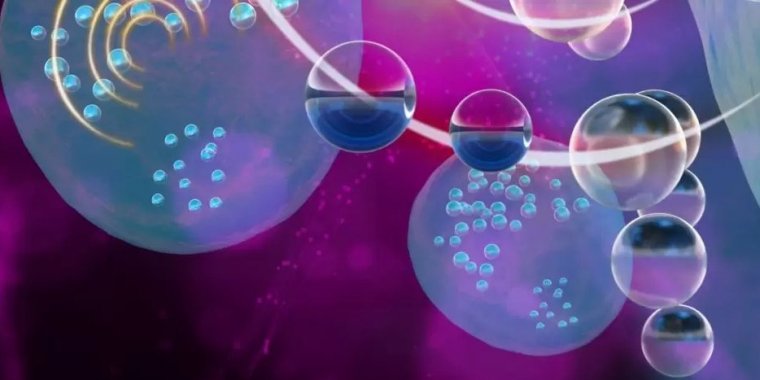| News / Tech News |
Tiny bubbles could reveal immune cell secrets and improve treatments
Macrophages are small cells vital to the immune system that could lead to cell-based therapies for many medical conditions.

Nano-sized bubbles allow macrophages to stand out from their fellow cells in ultrasound imagery. Photo: Jennifer M. McCann/Materials Research Institute
But realizing the full potential of macrophage therapies relies on being able to see what these cells are up to inside our bodies. Now, a team of Penn Stateresearchers may have developed a way to do just that.
In a recent study, the scientists report a novel ultrasound imaging technique to view macrophages in mammal tissue, with the potential for human applications.
"A macrophage is a type of immune cell that is important in nearly every function of the immune system, from detecting and clearing pathogens to wound healing," said corresponding author Scott Medina, a biomedical engineer at Penn State.
According to Medina, macrophages could be harnessed and applied in therapies that would help patients with conditions such as cancer, autoimmune disorders, infections and damaged tissue.
"If we could visualize what these cells are doing in the body in real time, then we could learn a lot about how diseases progress and how healing happens," Medina said.
The researchers turned to ultrasound imaging, a common technique to view the body's internal tissues. However, with ultrasound alone, macrophages blend in with their fellow cells. To address this, the team created a contrast agent to distinguish the macrophages from other cells.
The scientists introduced nanoemulsion droplets to the cells. An example of emulsions are oil droplets suspended in vinegar in salad dressing; a nanoemulsion is a tiny oil droplet, mere nanometers in diameter.
Under ultrasound, the droplets then went through a phase change, turning into gas bubbles. The pressure from the ultrasound waves facilitated the change, pushing and pulling on the droplets as the waves oscillated and used pressure to force the droplets to boil, making them vaporize into gas bubbles.
Next steps in the research include exploring the possibility of using this technique for other types of immune cell visualization in the human body or to monitor buildup of plaque in arteries. (U.S. National Science Foundation)
YOU MAY ALSO LIKE





